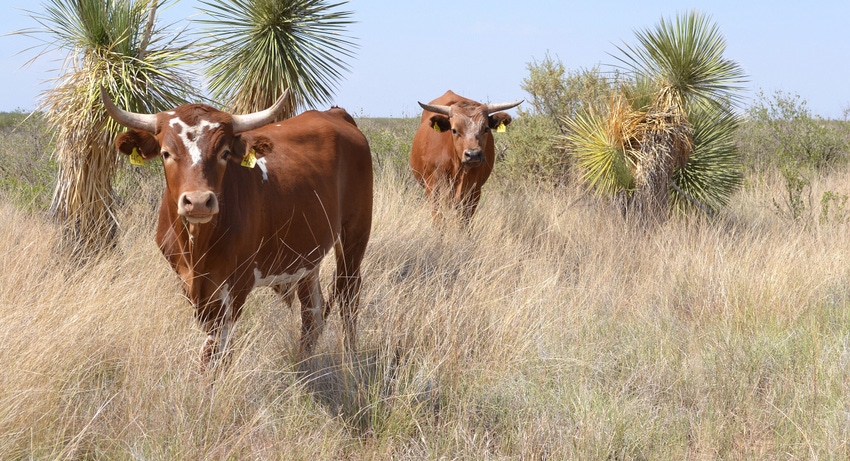The independent auditors verify, for consumers, which ag practices were employed to produce their food and fiber products.
May 20, 2021

Product marketing tells the story of a product’s creation. For food products and produce, this is the story of how farmers and ranchers care for their livestock, crops, and land. Many consumers want to know the story of their food and fiber. To ensure the story follows product through the sprawling food chain, and that it remains accurate, third party organizations provide verification services.
There are several third-party certification options for farms and ranches. The independent auditors verify, for consumers, which ag practices were employed to produce their food and fiber products. “With the globalization of the food system,” explains Maki Hatanaka, Professor of Sociology at Sam Houston State University, “the supply chains have become very long.”
“From the consumers’ perspective, they increasingly do not know how food is produced, who is producing it, and under what conditions and where. Third-party certification is a mechanism to address that issue. It makes the production processes more transparent for consumers.”
Third-party certifications assure consumers that products are produced in ways that align with their values. “A growing segment of customers want to purchase products with certain characteristics, such as organic, sustainable, or non-GMO,” Hatanaka says of her research on non-state governance of the food system. “There isn’t much government regulation in many of these areas, with the exception of organics. This is why consumers rely on private forms of governance, such as third party verification.”
Third-party certifiers
There are numerous third-party certifying organizations for myriad crops. The most established include fair-trade organizations and the U.S. Department of Agriculture (USDA) National Organic Program (NOP).
For animal welfare, the Global Animal Partnership (GAP) certification, with handling and care standards for animals from poultry to cattle, is the most widely recognized in the US. Several national retailers require the GAP certification for all meat products sold in their stores, including Whole Foods Market. Additional animal welfare certifiers include:
The Humane Farm Animal Care organization that provides the Certified Humane verification.
The A Greener World organization manages the Certified Animal Welfare Approved certification.
The American Grassfed Association administers the American Grassfed label that includes animal welfare with its diet standards. These are: livestock must have a lifetime diet of 100% forage, be raised on pasture without confinement, and are never treated with added hormones or antibiotics.
Consumers that care about animals also want to know how a product’s creation affects wildlife.
They seek the Certified Wildlife Friendly product seal administered by the Wildlife Friendly Enterprise Network.
Avid birders like the National Audubon Society’s Grazed on Bird-friendly Land certification granted through Audubon’s Conservation Ranching Program.
The Food Alliance audits Audubon’s Conservation Ranch Program producers. The organization offers certification programs for crop producers, livestock producers, shellfish farms, nursery and greenhouse, and handling operations.
A third-party certification that evaluates holistic management practices and monitors land health is Savory Institute’s Ecological Outcome Verification (EOV). It measures and tracks the outcome of ag practices in regards to soil health, carbon sequestration, water cycling, and biodiversity. Savory designed EOV to serve both producers as a dynamic monitoring tool, and food and fashion brands that want to regeneratively source food and fiber.
Label definitions
There are subtle, and vast, differences between third-party certification seals and self-assigned descriptive labels utilized by food brands and producers that sell direct-to-consumer. Both producers and consumers interpret label descriptors — such as local, all-natural, pasture-raised, free-range, etc. — dissimilarly.
“Consumers are confused and overwhelmed because there are so many labels,” Hatanaka says, “And, for those labels, there often are no agreed-upon definitions. When we ask consumers, ‘What are the characteristics of sustainable production?’ Most likely they will say, ‘Well, organic.’”
Labels and certifications are a muddle for producers, too. It’s difficult to identify which third-party certification or descriptive label clearly distinguishes good livestock and land management practices. Also, which one will garner the most consumer recognition.
There’s definitely a retail market for food products that are produced in specific ways. These customers are willing to pay more for products that possess the characteristics that they value. “But, when evaluating the market, it is important to note that these consumers often weigh a host of other factors in making purchasing decisions,” Hatanaka says. “They also look at price, quality and convenience.”
In today’s sprawling food system, producers and consumers aren’t the only members of the food chain. There are many stakeholders that sit in the middle. “Corporations, the food brands and processors, pursue their own interests and needs, apart from the producers’ and/or consumers’,” Hatanaka says. “Some take the extra steps to become third-party certified themselves, and/or purchase from producers with third party certifications.”
Ultimately, the purpose of certifications and labels is to attach a creation story to product. It’s a storyline that flows from producer to the end consumer. Because many consumers are skeptical of marketing claims, third party certifications verify that the story is accurate and labels defined.
[Melissa Hemken writes from Lander, Wyo.]
About the Author(s)
You May Also Like



